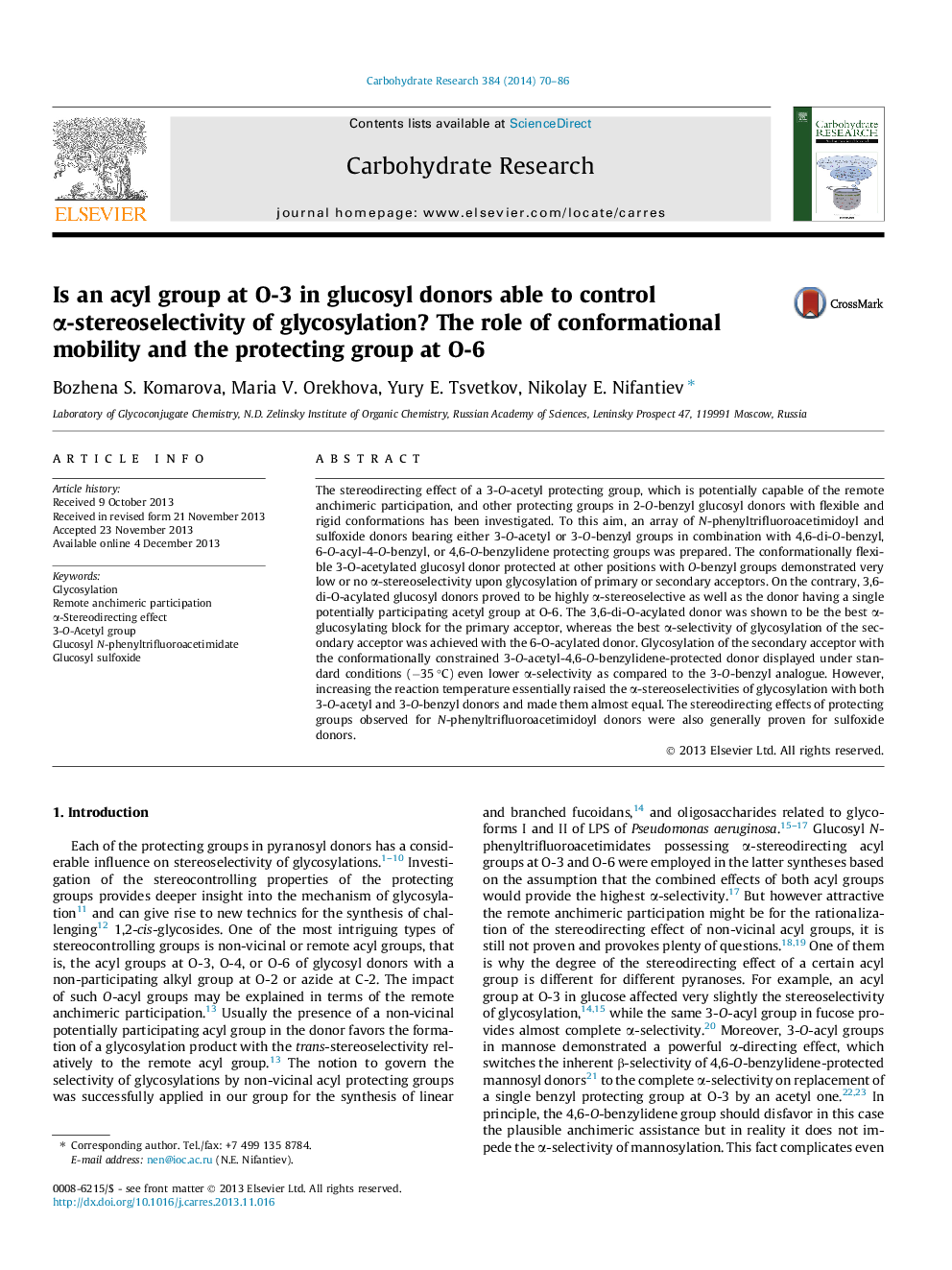| کد مقاله | کد نشریه | سال انتشار | مقاله انگلیسی | نسخه تمام متن |
|---|---|---|---|---|
| 1388627 | 1500867 | 2014 | 17 صفحه PDF | دانلود رایگان |

• Glucosylation with donors bearing acetyl groups at O-3 and/or O-6 has been studied.
• A sole acetyl group at O-3 did not cause any appreciable α-directing effect.
• 6-O-Acetyl and 3,6-di-O-acetyl donors demonstrated the highest α-stereoselectivity.
• Increasing the reaction temperature facilitated higher α-stereoselectivity.
The stereodirecting effect of a 3-O-acetyl protecting group, which is potentially capable of the remote anchimeric participation, and other protecting groups in 2-O-benzyl glucosyl donors with flexible and rigid conformations has been investigated. To this aim, an array of N-phenyltrifluoroacetimidoyl and sulfoxide donors bearing either 3-O-acetyl or 3-O-benzyl groups in combination with 4,6-di-O-benzyl, 6-O-acyl-4-O-benzyl, or 4,6-O-benzylidene protecting groups was prepared. The conformationally flexible 3-O-acetylated glucosyl donor protected at other positions with O-benzyl groups demonstrated very low or no α-stereoselectivity upon glycosylation of primary or secondary acceptors. On the contrary, 3,6-di-O-acylated glucosyl donors proved to be highly α-stereoselective as well as the donor having a single potentially participating acetyl group at O-6. The 3,6-di-O-acylated donor was shown to be the best α-glucosylating block for the primary acceptor, whereas the best α-selectivity of glycosylation of the secondary acceptor was achieved with the 6-O-acylated donor. Glycosylation of the secondary acceptor with the conformationally constrained 3-O-acetyl-4,6-O-benzylidene-protected donor displayed under standard conditions (−35 °C) even lower α-selectivity as compared to the 3-O-benzyl analogue. However, increasing the reaction temperature essentially raised the α-stereoselectivities of glycosylation with both 3-O-acetyl and 3-O-benzyl donors and made them almost equal. The stereodirecting effects of protecting groups observed for N-phenyltrifluoroacetimidoyl donors were also generally proven for sulfoxide donors.
Figure optionsDownload as PowerPoint slide
Journal: Carbohydrate Research - Volume 384, 30 January 2014, Pages 70–86